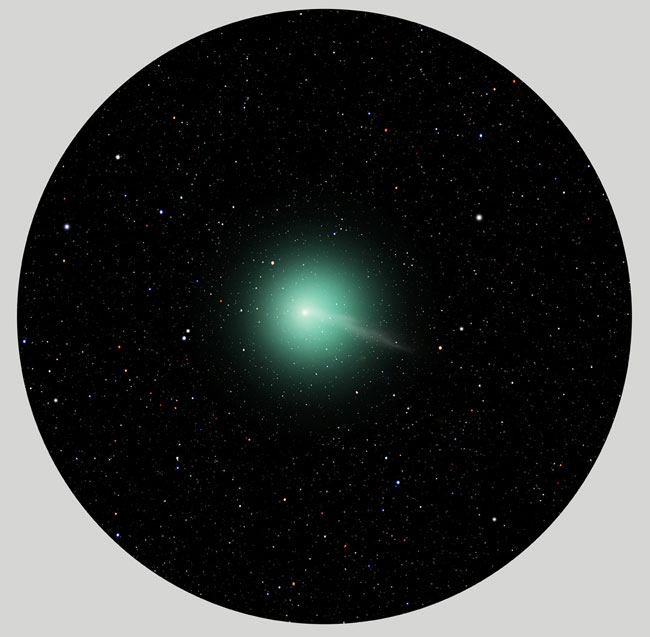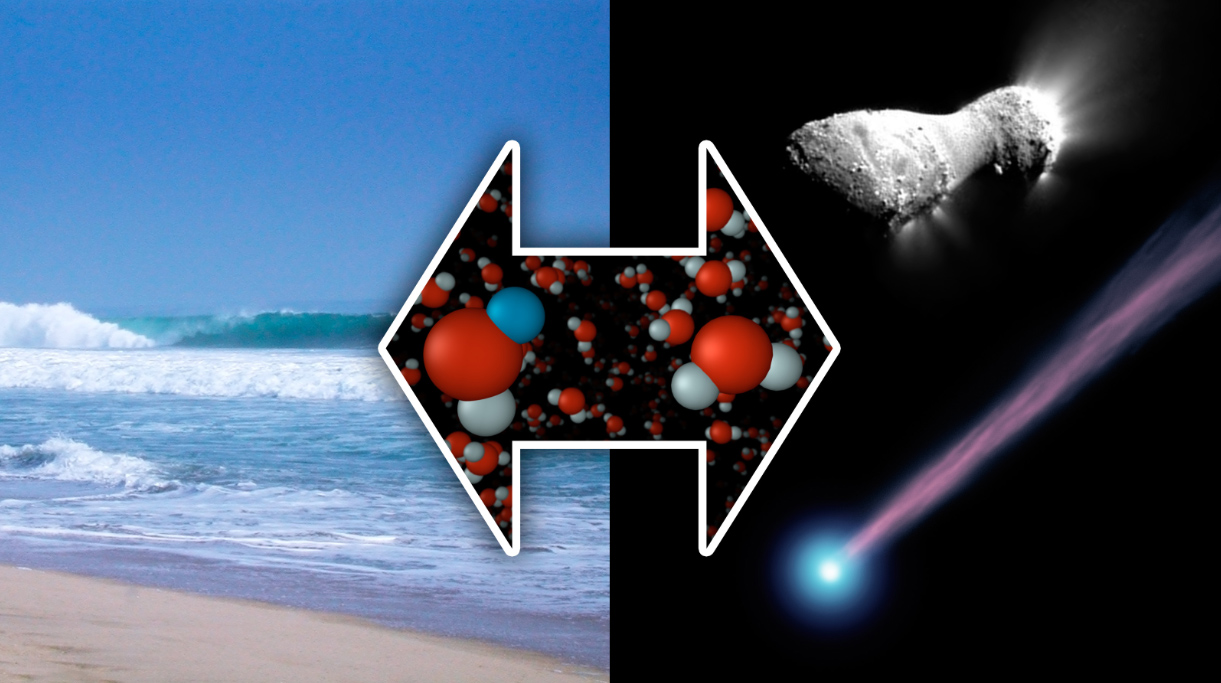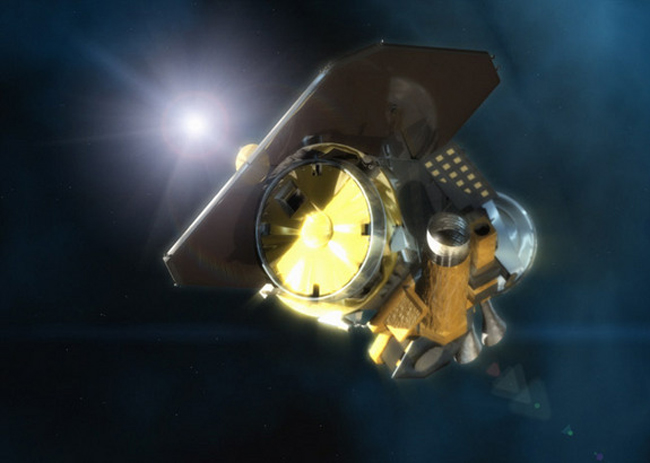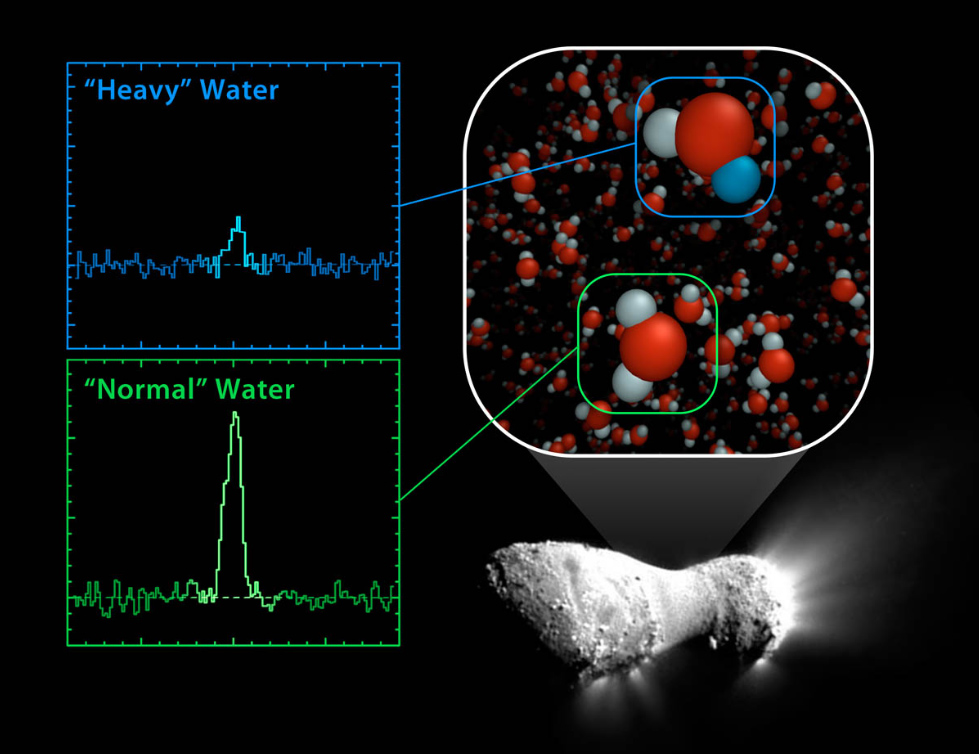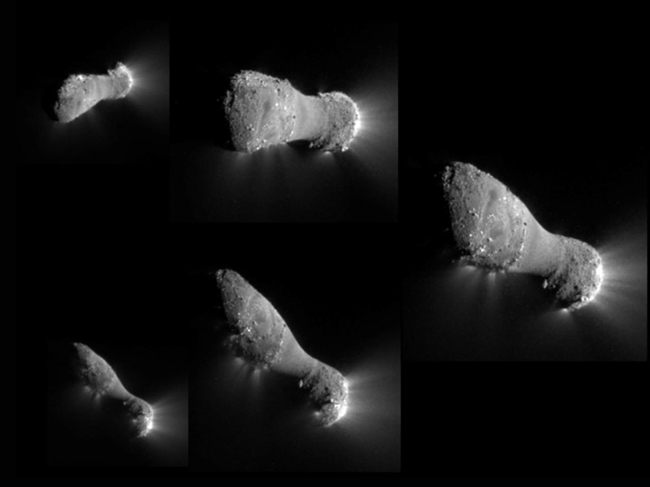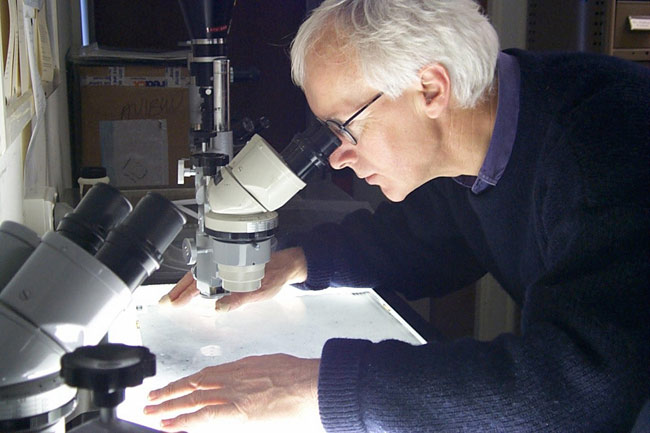Photos: Comet Hartley 2 Up Close
Up Close and Personal
A stunning close-up photo of Comet Hartley 2 from the Nov. 4, 2010 flyby performed by NASA's Deep Impact spacecraft. This close-up view of comet Hartley 2 was captured by the spacecraft's Medium-Resolution Instrument.
Round on Both Ends, Thin in the Middle
This is another of the first images sent back to Earth from the NASA's EPOXI mission after it flew by Comet Hartley 2 around 7 a.m. PDT (10 a.m. EDT) on Nov. 4, 2010.
Meteors From Comet Hartley 2 Amaze Skywatchers
This is how Comet Hartley 2 might appear in the eyepiece of a large amateur telescope. Located about eight degrees (16 full moon diameters) away from the bright star Procyon as it leaves the constellation Gemini, Comet Hartley will be best viewed high in the sky just before dawn.
Comet Hartley 2 and Earth's Ocean Water
Measurements from the Herschel Space Observatory show that comet Hartley 2, which comes from the distant Kuiper Belt, contains water with the same chemical signature as water in Earth's oceans. The findings may help explain how Earth’s surface ended up covered in water.
NASA's Deep Impact Spacecraft
An artist's conception shows a close-up look at NASA's comet-hunting Deep Impact spacecraft.
Comet Hartley 2 with Spectra of "Normal" and "Heavy" Water
This NASA EPOXI mission image shows the nucleus of comet Hartley 2 with overlaid spectra of the "normal" and "heavy" water, as observed with the Heterodyne Instrument for the Far Infraredaboard Europe's Herschel Space Observatory.
Get Close
This is one of the first images sent back to Earth from the NASA's EPOXI mission after it flew by Comet Hartley 2 around 7 a.m. PDT (10 a.m. EDT) on Nov. 4, 2010.
Breaking space news, the latest updates on rocket launches, skywatching events and more!
Take 5
This image montage shows Comet Hartley 2 as NASA's EPOXI mission approached and flew under the comet. The images progress in time clockwise, starting at top left.
Q&A With Malcolm Hartley, Discoverer of Comet Hartley 2
Malcolm Hartley discovered Comet Hartley 2 back in 1986. On Nov. 4, NASA's Deep Impact spacecraft will make a close flyby of the comet, coming within a mere 435 miles (700 kilometers).
I Can See Your Comet From Here
Hubble Space Telescope observations of Comet 103P/Hartley 2, taken on Sept. 25, 2010, are helping in the planning for a Nov. 4 flyby of the comet by the Deep Impact eXtended Investigation (DIXI) on NASA's EPOXI spacecraft.
Close Flyby of Comet Hartley 2
This video shows the view from NASA's EPOXI/Deep Impact spacecraft during its flyby of comet Hartley 2 on Nov. 4, 2010.

Space.com is the premier source of space exploration, innovation and astronomy news, chronicling (and celebrating) humanity's ongoing expansion across the final frontier. Originally founded in 1999, Space.com is, and always has been, the passion of writers and editors who are space fans and also trained journalists. Our current news team consists of Editor-in-Chief Tariq Malik; Editor Hanneke Weitering, Senior Space Writer Mike Wall; Senior Writer Meghan Bartels; Senior Writer Chelsea Gohd, Senior Writer Tereza Pultarova and Staff Writer Alexander Cox, focusing on e-commerce. Senior Producer Steve Spaleta oversees our space videos, with Diana Whitcroft as our Social Media Editor.


